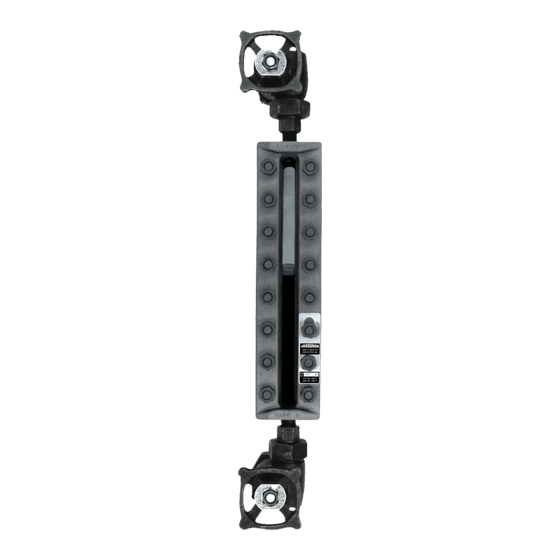
Table of Contents

Summarization of Contents
Introduction
Flat Glass Gages (Armored Gages)
Describes Jerguson Flat Glass Gages as simple, rugged instruments for accurate liquid level readings in diverse applications.
Bringing Gage Into Service
Valve Opening Procedure
Details the step-by-step process for safely opening isolation valves and bringing the gage into service.
Maintenance
Inspecting Glass
Guides on visually checking the gage glass for clouding, scratches, or chemical attack for potential replacement.
Cleaning Glass
Provides instructions on cleaning gage glasses using commercial cleaners or dilute acids without removing the glass.
Receiving / Storing Glass
Advises on inspecting, handling, and storing replacement glass carefully to prevent damage.
Disassembly
Outlines precautions before disassembling the gage, emphasizing depressurization and ambient temperature.
Reassembly
Refers to cutaway diagrams showing the construction of Reflex and Transparent glass gages.
Special Applications
Spring Washers for Temperature Extremes
Explains using Belleville spring washers to maintain gasket loading in extreme temperature applications.
Shields for Protection from Chemical Attack
Details the use of PCTFE or mica shields for transparent gage glasses with corrosive fluids.
Vacuum Service
States that glass gages are suitable for vacuum service if they do not have a PCTFE shield.
High / Low Temperature Service
Recommends uniform insulation for gages in high/low temperature service to prevent thermal stress.
Operation in Low Temperature Service
Advises slow warm-up procedures for gages in low-temperature service to prevent thermal shock.





Need help?
Do you have a question about the 20 Series and is the answer not in the manual?
Questions and answers